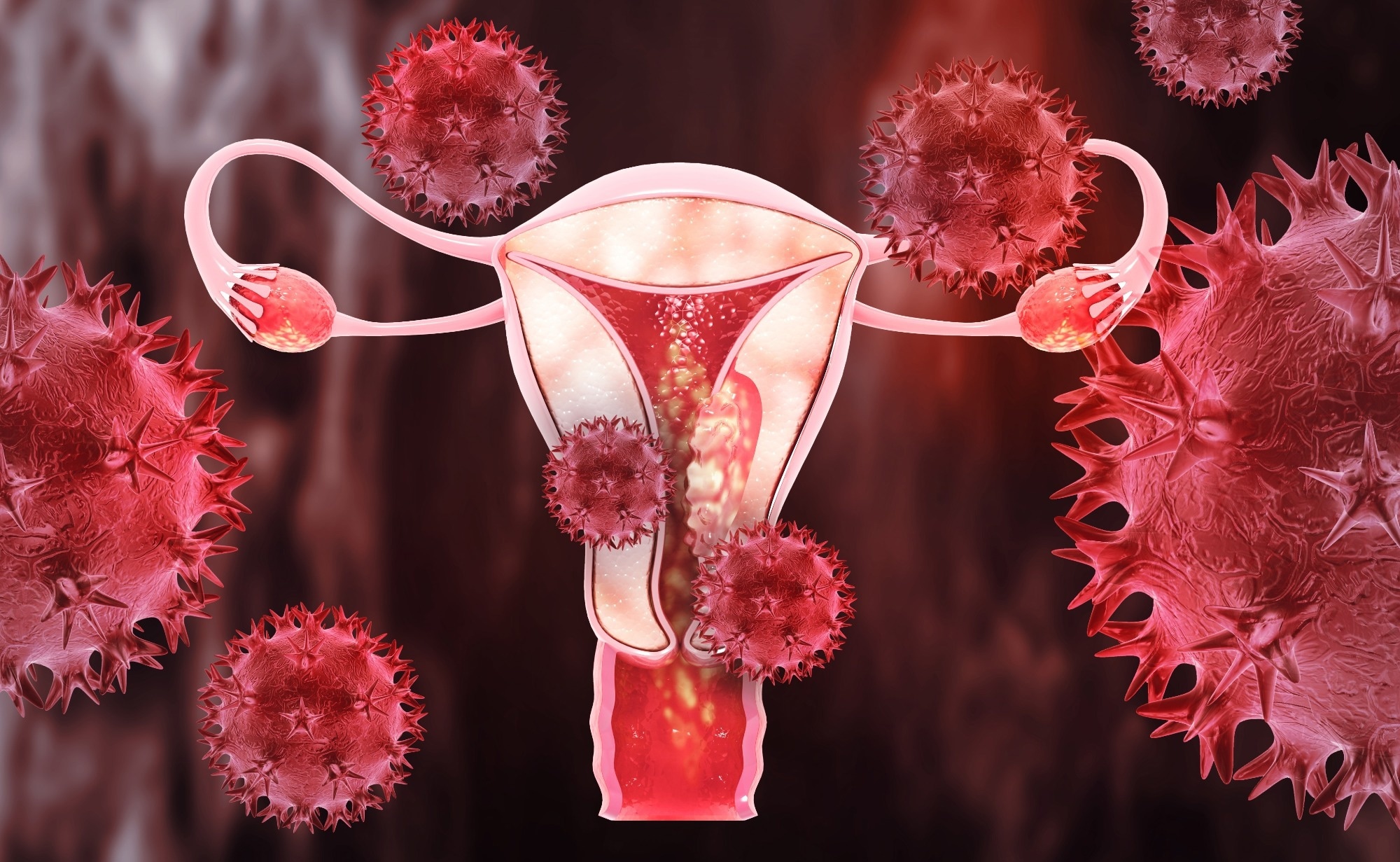In a recent study published in eBioMedicine, researchers evaluated proteomic signatures in blood plasma and cervicovaginal fluid to detect endometrial cancer.
 Study: Detection of endometrial cancer in cervicovaginal fluid and blood plasma: leveraging proteomics and machine learning for biomarker discovery. Image Credit: crystal light / Shutterstock.com
Study: Detection of endometrial cancer in cervicovaginal fluid and blood plasma: leveraging proteomics and machine learning for biomarker discovery. Image Credit: crystal light / Shutterstock.com
Diagnosing endometrial cancer
The prevalence of endometrial cancer, which is the most common gynecological malignancy in high-income countries, continues to rise throughout the world. Endometrial cancer is amenable to curative hysterectomy when diagnosed early, with a five-year survival rate of over 90% following treatment. Comparatively, individuals with metastatic or advanced disease often have poor outcomes, with the five-year survival rate estimated at 15%.
Over 90% of females with endometrial cancer present with postmenopausal bleeding, thus triggering urgent investigations through sequential transvaginal ultrasound, hysteroscopy, and endometrial biopsy, all of which could be anxiety-provoking and painful procedures. Therefore, developing simple, cost-effective, and non-invasive tests for early cancer diagnosis is crucial for both patients and clinicians.
Cervicovaginal fluid, which is a mix of vaginal, uterine, and cervical secretions, has been investigated as a source of biomarkers for inflammatory conditions of the lower reproductive tract, pregnancy-related pathologies, and cervical neoplasia. In fact, one recent study found that cervicovaginal fluid can be used to detect endometrial cancer.
About the study
In the present study, researchers evaluate the performance of proteomic signatures from cervicovaginal fluid and plasma for endometrial cancer detection. Cases comprised females with histopathological evidence of endometrial cancer based on hysterectomy, whereas controls included symptomatic females without endometrial cancer or atypical hyperplasia. Individuals with a history of gynecological malignancy or hysterectomy were excluded.
Cervicovaginal fluid and blood were collected, and mass spectrometry was performed. Digitized proteomic maps were derived using sequential window acquisition of all theoretical mass spectra.
Spectral data were converted and searched against a human plasma library and a previously published library of 19,394 peptides and 2,425 proteins in the cervicovaginal fluid. Random forest (RF) modeling was used for feature selection. The most discriminatory proteins were ranked based on the mean decrease in accuracy.
Nested logistic regression models were built by sequentially adding proteins based on their rank. The parsimonious model was identified, and its performance was evaluated by plotting the receiver operating characteristic curve and calculating the area under the curve (AUC). Likelihood ratio tests and Akaike information criteria (AIC) were used to compare the performance of nested models.
Study findings
Overall, 118 postmenopausal females with symptoms were included in the study, 53 of whom had confirmed endometrial cancer and 65 with no evidence of cancer. About 86% of the study cohort were White. Individuals with endometrial cancer were likely to be older and have a higher body mass index (BMI) than controls.
Taken together, 597, 310, and 533 proteins were quantified in the cervicovaginal fluid supernatant, cell pellets, and plasma samples, respectively. Overall, 941 unique proteins were identified across sample types. There was evidence of separation between cancers and controls based on cervicovaginal fluid supernatant proteins.
Classifiers were selected based on the mean decrease accuracy metric of the RF model. Principal component analyses (PCA) using the top discriminatory proteins revealed more substantial discrimination between cancers and controls.
The model with the top five discriminatory proteins had the lowest AIC value and was selected as a parsimonious model. This model predicted endometrial cancer with AUC, sensitivity, and specificity of 0.95, 91%, and 86%, respectively.
Feature selection analysis indicated that 38 proteins were important for discrimination between cancers and controls. Proteins in cervicovaginal fluid cell pellets were less promising as cancer biomarkers than supernatant-derived proteins.
Fewer differentially expressed proteins were observed in plasma samples between cases and controls as compared to the cervicovaginal fluid, with little evidence of discrimination based on plasma proteins. PCA indicated a modest separation between cancers and controls. A three-plasma biomarker panel predicted endometrial cancer with AUC, sensitivity, and specificity of 0.87, 75%, and 84%, respectively.
Feature selection analysis revealed six plasma proteins as important classifiers. Furthermore, three- and four-marker panels of cervicovaginal fluid and plasma proteins predicted early-stage endometrial cancer with AUCs of 0.92 and 0.88, respectively. Five- and six-marker panels of cervicovaginal fluid and plasma proteins predicted advanced-stage endometrial cancer with AUCs of 0.96 and 0.93, respectively.
Conclusions
Cervicovaginal fluid proteins were more accurate in detecting endometrial cancer than plasma proteins. The five-marker panel of cervicovaginal fluid proteins comprised the immunoglobulin heavy constant mu (IGHM), haptoglobin (HPT), fibrinogen alpha chain (FGA), lymphocyte antigen 6D (LY6D), and galectin-3-binding protein (LG3BP), whereas the three-marker panel of plasma proteins included HPT, proteasome 20S subunit alpha 7 (PSMA7), and apolipoprotein D (APOD).
Further confirmatory studies using larger cohorts are needed to validate these findings.
Journal reference:
- Njoku, K., Pierce, A., Chiasserini, D., et al. (2024). Detection of endometrial cancer in cervicovaginal fluid and blood plasma: leveraging proteomics and machine learning for biomarker discovery. eBioMedicine. doi:10.1016/j.ebiom.2024.105064